Teasing – the history
Teasing is an age old technique; the practice of which we can trace back to the ancient Egyptians. This process creates different levels of dense fluff on the fabric, this fluff serves to make the fabric softer and warmer. Obviously the denser the fluff the warmer the fabric! In fact, this procedure increases the amount of air trapped between the fibers consequently forming a thermal insulation. In past times they used the dried flowers from the thistle plants, put in a straight lines until they formed a kind of brush with which they used to stroke the fabric
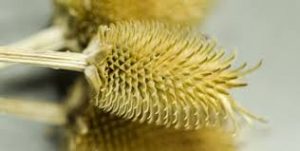 (Thistle flower)
(Thistle flower)
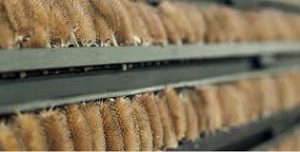 (Brushes made of thistle flowers)
(Brushes made of thistle flowers)
Thistles, were widespread in the mediterranean basin. Apart from being used in fabric production, they were also used in medicine, for their diuretic and cleansing qualities. In his reign, over most of western and central Europe, Charlemagne, cites this plant in the laws and orders given to the powerful religious institutions. It’s thanks to the hard work of the monks in the french territories, that by means of diffusion and selection, the thistle became a cultivated plant ideal for the teasing of wool. In 1800, the cultivation of thistles started in Italy and it was extensive, thanks to the growth of the textile industry. Due to the high cost of manual labour, necessary to collect the thistle flowers, the use of this plant declined, and it was replaced by modern machinery, with hooked rollers which did the teasing mechanically.
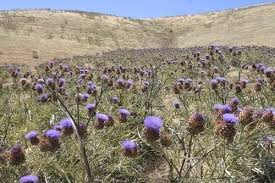 (thistle cultivation)
(thistle cultivation)
Modern Times
Today the teasing procedure is done on machines with brushes which have metal or plastic teeth. These machines consist of a rotating barrel onto which are fixed cylinders incorporating the brushes. These cylindrical brushes have teeth some of which go in the direction of the fabric and the remaining going in the contrary direction. By controlling the speed of the fabric in respect to the speed of the cylinders you can adjust the density of the fluff according to the use and type of final fabric required. The teasing can be made on both sides of the fabric to give a very soft hand. The process can be made both dry or wet. In the first case the hairs are more swollen and messy, in the second case the hairs are very thick but regulated, all going in the same direction.
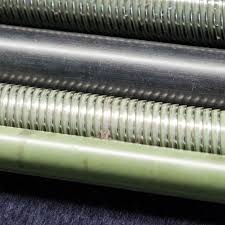 (Teasing machine)
(Teasing machine)
High quality teasing
In some cases, when we use very precious fibers such as cashmere or Merino wool, the teasing is still done with the natural thistle flowers. The flowers are fixed in a parallel line onto rollers that turn in the opposite direction to the fabric. In this case, thanks to the natural characteristics of the flower the final result is excellent. The thistles lift the hair and comb it, making the fabric soft and shiny. Natural teasing hides almost all of the weft and weave of the fabric, most importantly it gives a much finer result when compared to that produced mechanically, and has feel on the skin almost like velvet.
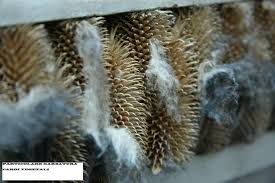 (Teasing)
(Teasing)
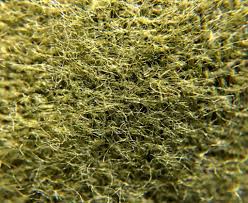 (Result of teasing )
(Result of teasing )
This technique, needs great skill, alot of attention must be given to the care of the thistle flower and also to controlling that its abrasive action does not ruin the fabric. This way of teasing, is much more expensive than the machine version, the reason being it is slower and you need to change all the thistle flowers after very 48 hours of production. Obviously, this process is used on only the highest class fibers, where you ae looking an absolute top quality finish.
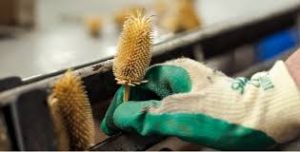 (Replacing thistle flowers)
(Replacing thistle flowers)
Our company uses this technique for the production of a brushed cotton fabric which makes our garments both warm and comfortable.

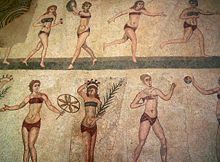 (subligaculum)
(subligaculum)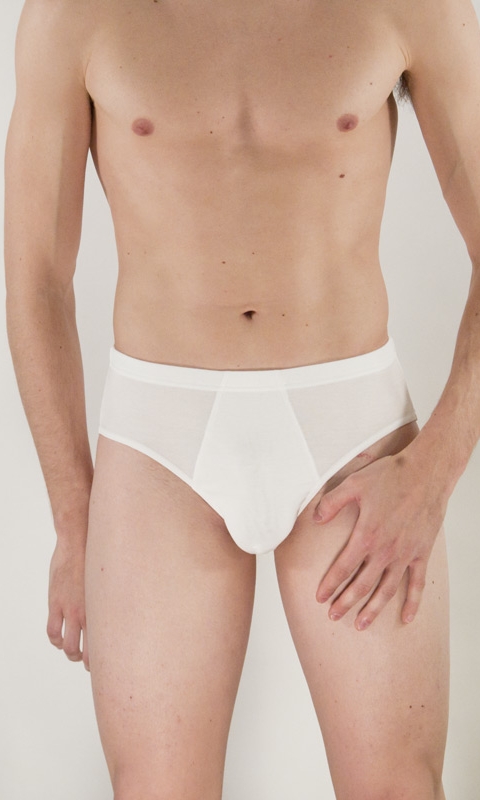 (Closed briefs)
(Closed briefs)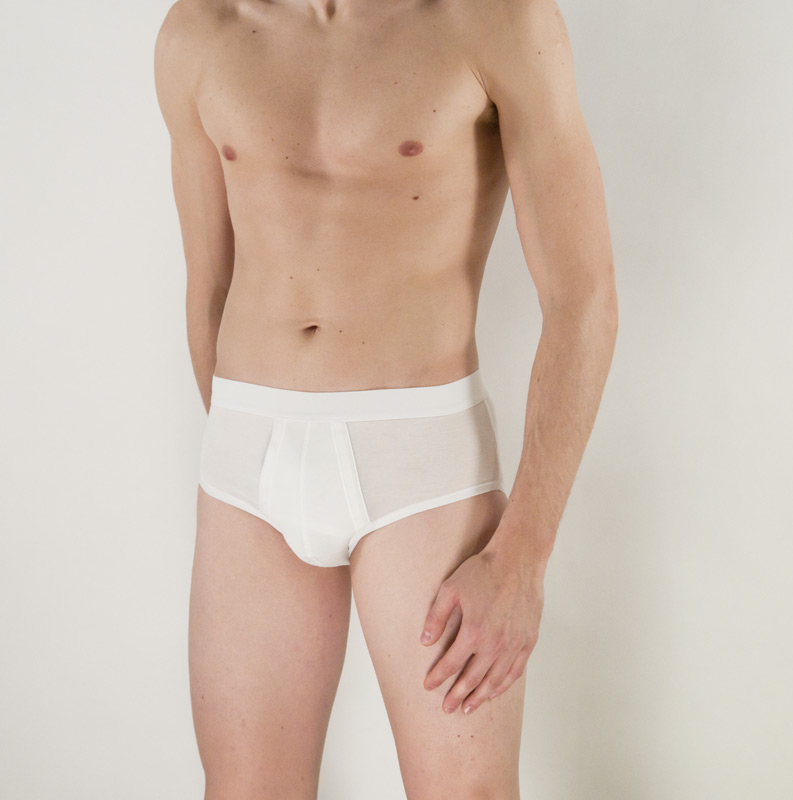 (Front open briefs)
(Front open briefs) (Canottieri in azione)
(Canottieri in azione) (Marlon Brando)
(Marlon Brando)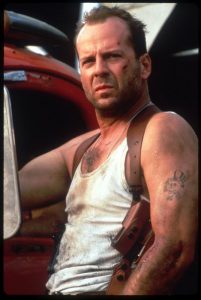 (Bruce Willis)
(Bruce Willis) (Freddie Mercury)
(Freddie Mercury)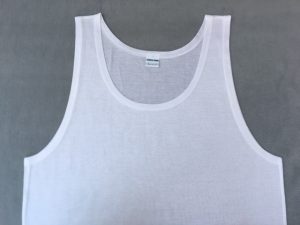 (Wide strap vest)
(Wide strap vest)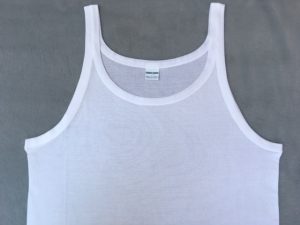 (Narrow strap vest)
(Narrow strap vest)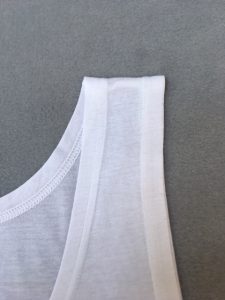 (Wide strap details)
(Wide strap details)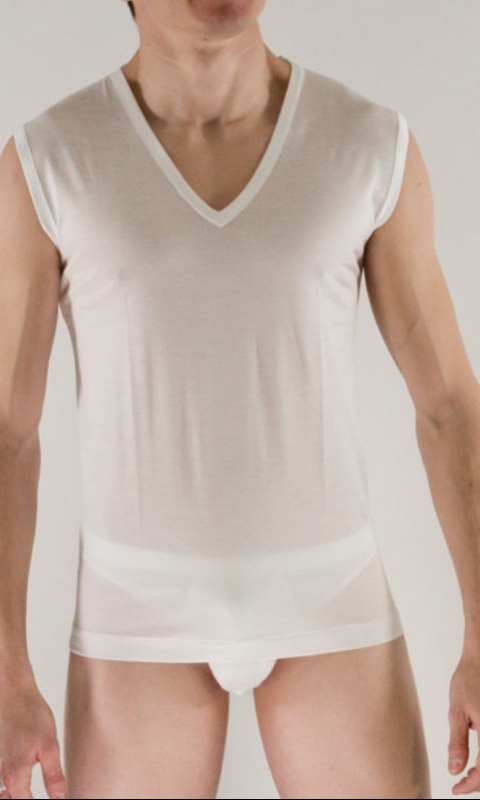 (V-neck without sleeves)
(V-neck without sleeves)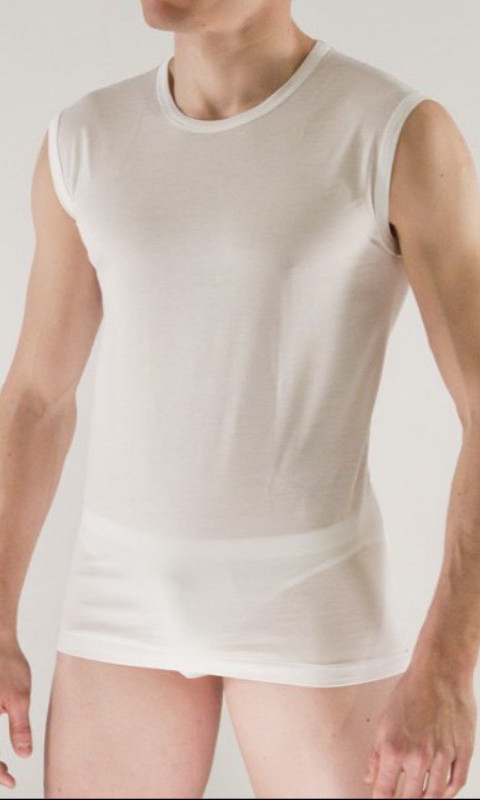 (Sleeveless crew neck)
(Sleeveless crew neck)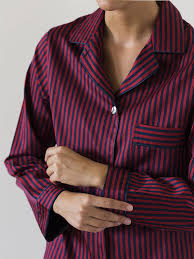
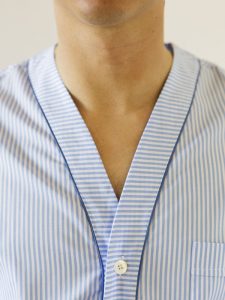
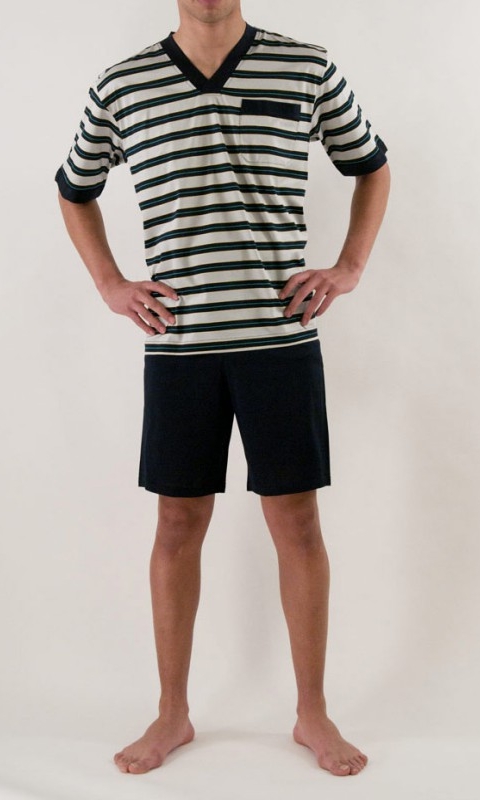
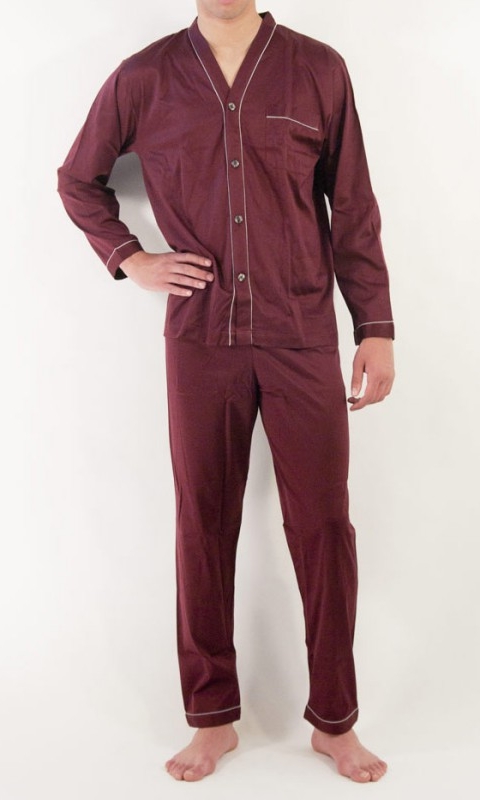
 (Sailors)
(Sailors)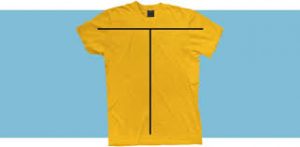 (t-shirt)
(t-shirt) (James Dean and Marlon Brando)
(James Dean and Marlon Brando)
 (American Graffiti cult film 70’s)
(American Graffiti cult film 70’s) (Surfer)
(Surfer) (Hard rock cafè)
(Hard rock cafè)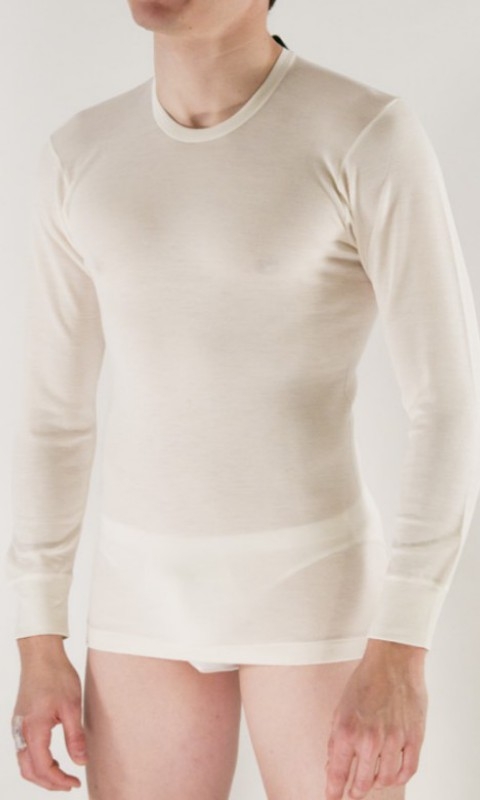
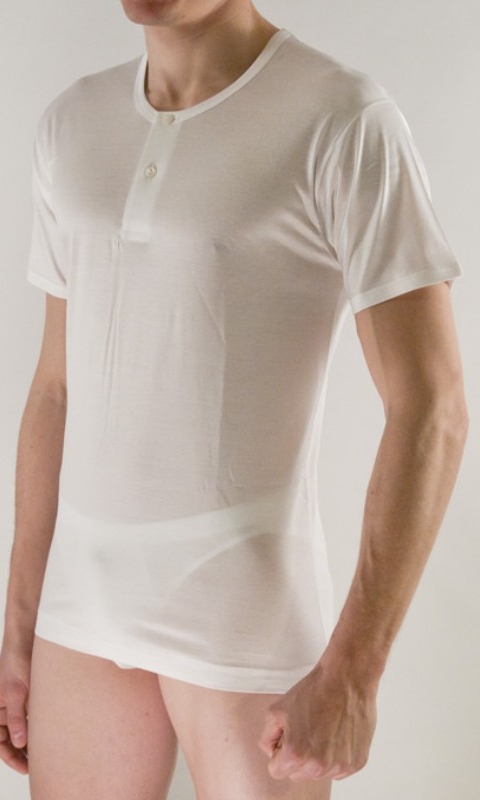
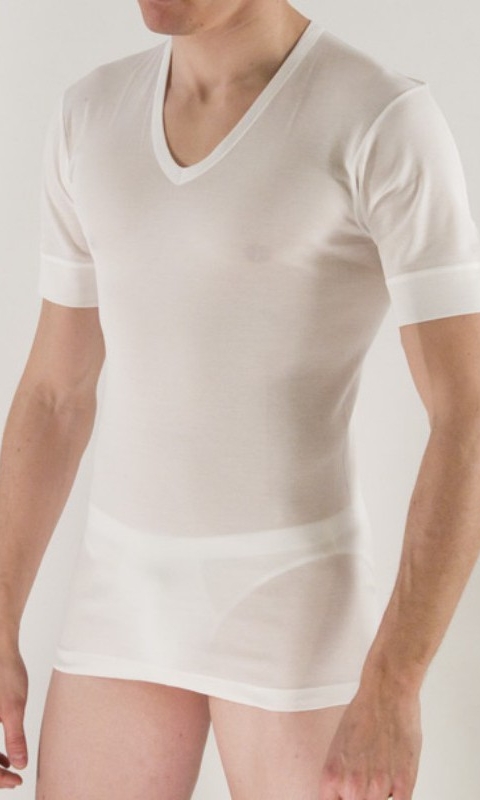
 (Young labourer)
(Young labourer) (Child labour – spinning mill)
(Child labour – spinning mill) (Child labour – textile mill)
(Child labour – textile mill) (Young miners)
(Young miners) (Verdingkinder)
(Verdingkinder) (Our basic concept)
(Our basic concept)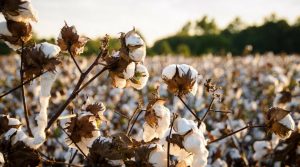 (Egyptian cotton)
(Egyptian cotton)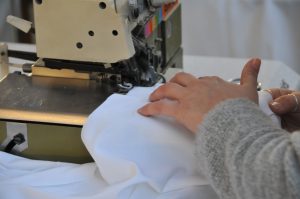 (Hand made garments)
(Hand made garments)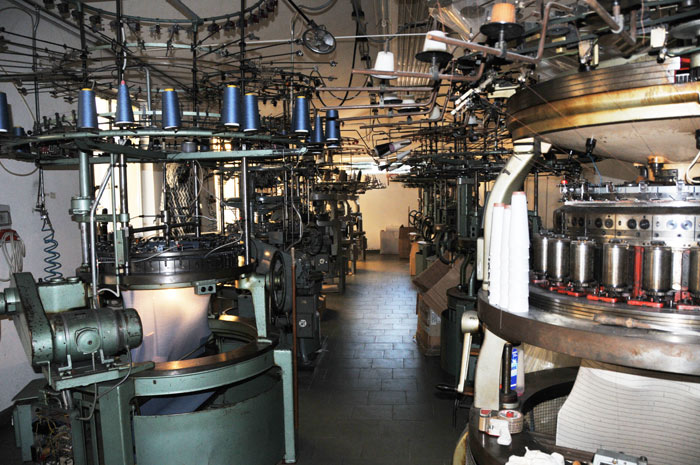 (Knitting department)
(Knitting department)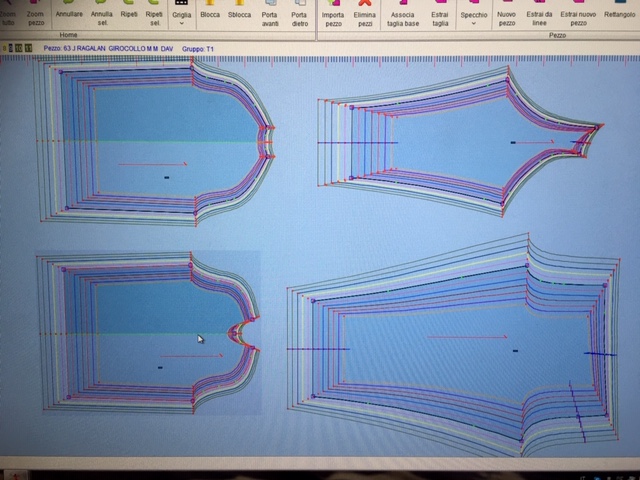 (Patterns – C.A.D)
(Patterns – C.A.D) (treatment room)
(treatment room)
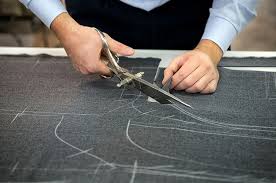 (bespoke pattern)
(bespoke pattern)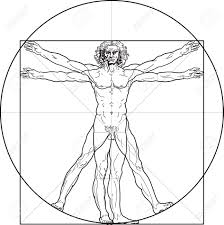
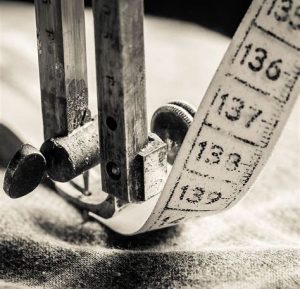
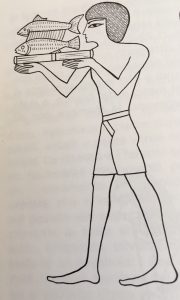 (pano)
(pano) 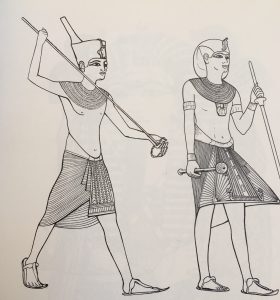 (schentis)
(schentis)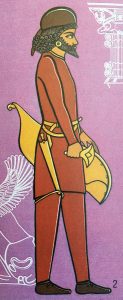 (anaxyrides)
(anaxyrides)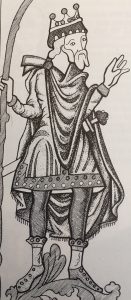 (IX century)
(IX century)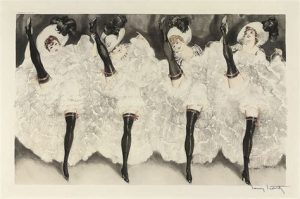 (can can)
(can can)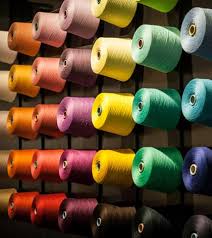 (Yarn)
(Yarn)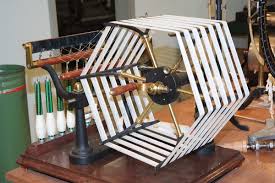 (Machine to determine the length and the weight of the yarn)
(Machine to determine the length and the weight of the yarn)